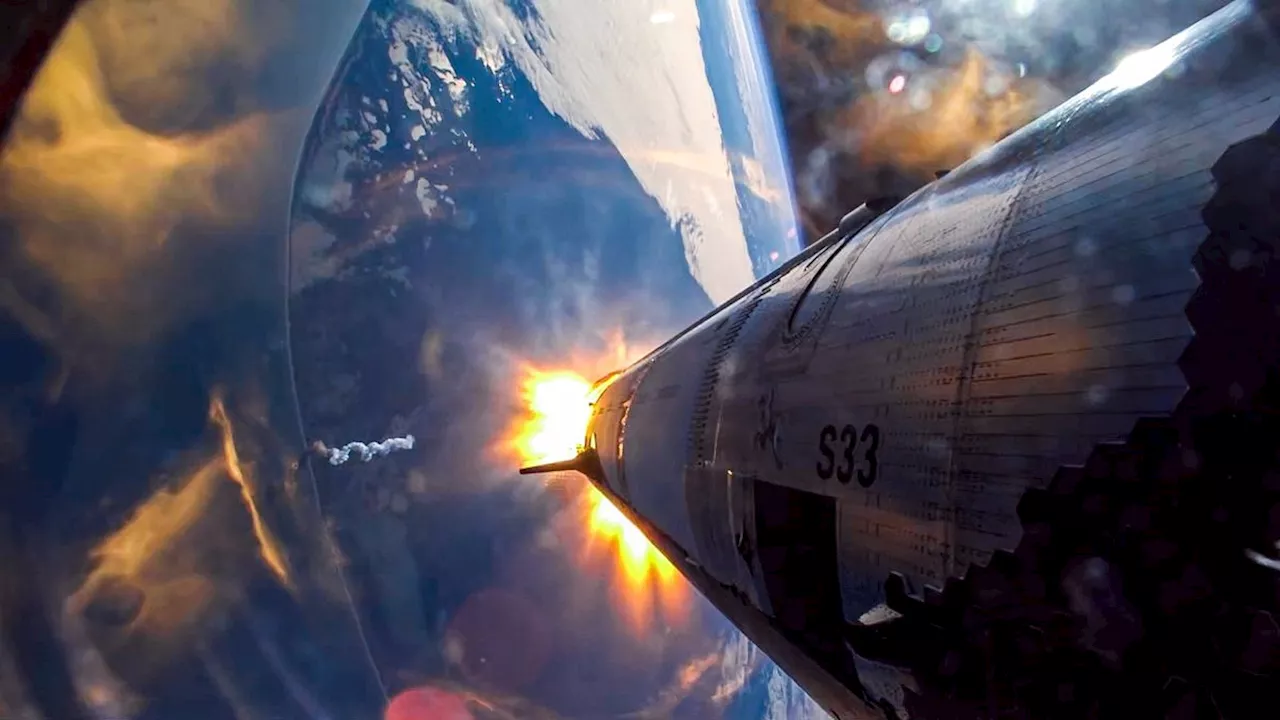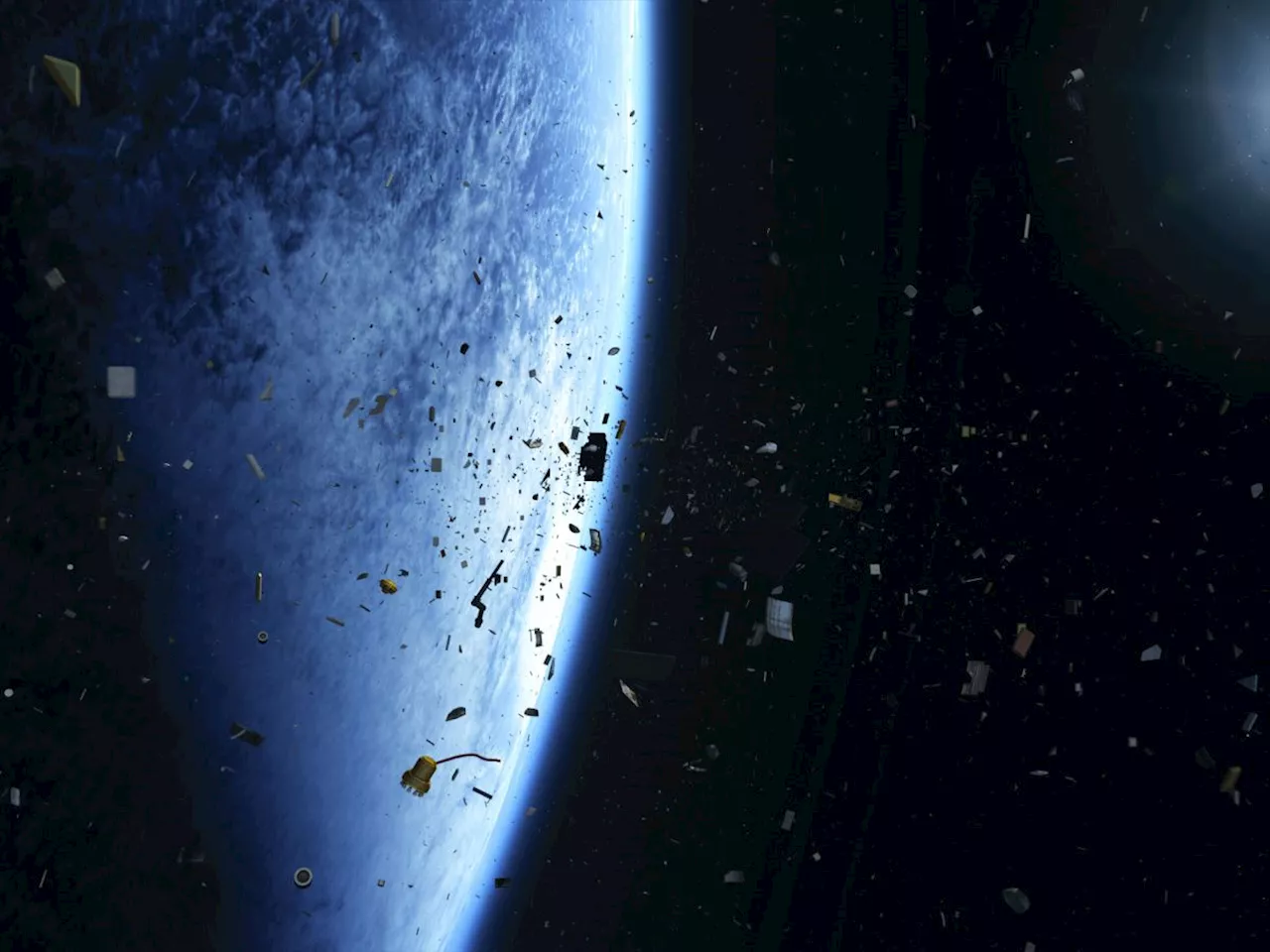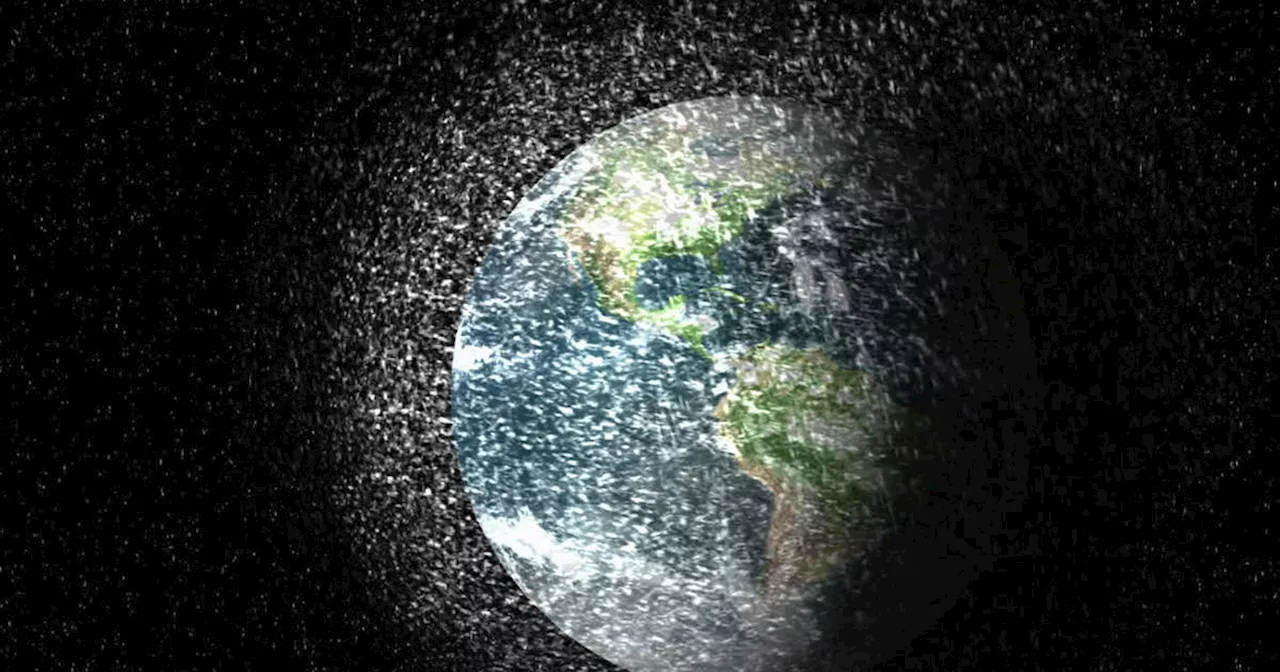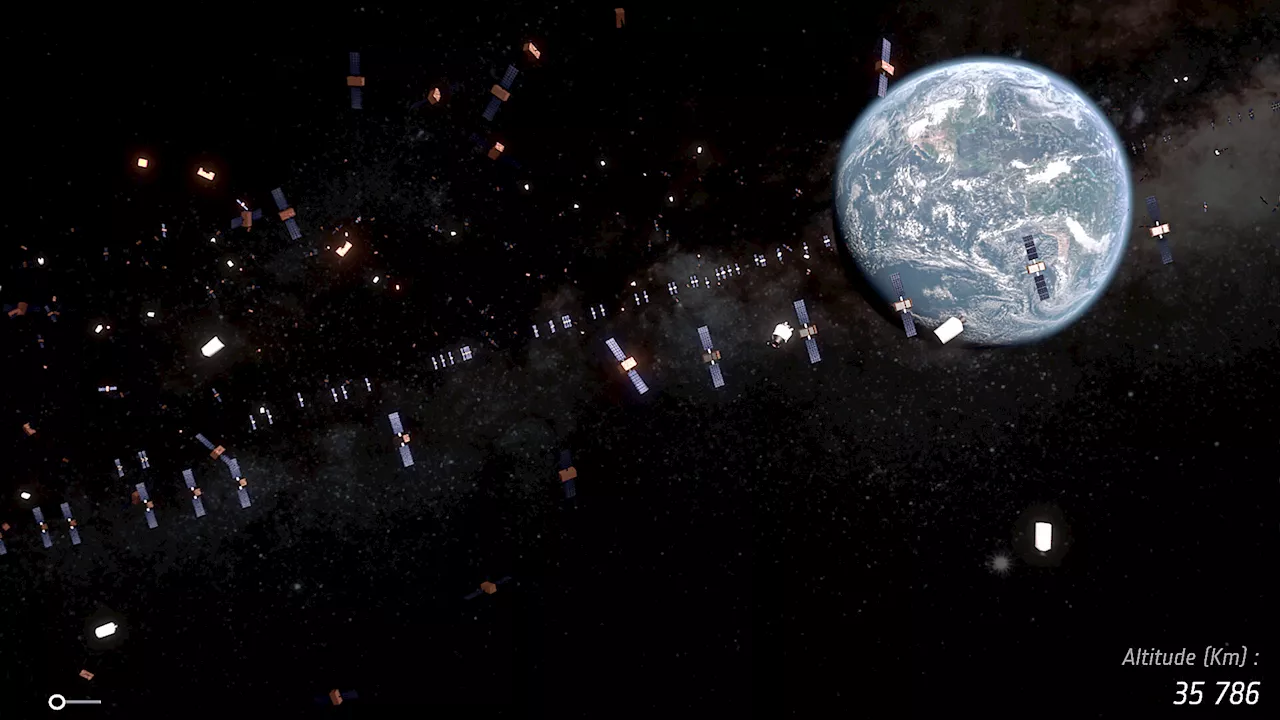The increasing number of rockets launched into space is creating a significant amount of debris, posing a growing risk to air travel. A recent study highlights the increasing likelihood of debris re-entering the atmosphere and impacting busy airspace.
In the more than 60 years since the Space Age began, humans have sent over 6,740 rockets to space. According to the ESA, this has resulted in 56,450 objects in orbit; about 36,860 of these objects are regularly tracked and maintained in a catalog, while 10,200 are still functioning. The rest is a combination of spent rocket stages, defunct satellites, and pieces of debris caused by unused propellant exploding and orbital collisions.
This is leading to a cascade effect known as the Kessler Syndrome, with the U.S. (158) and China (68) leading the way. And with future break-ups occurring at historic rates of 10 to 11 per year, the number of debris objects in orbit will continue to increase. According to a team from the University of British Columbia (UBC), this also means that debris falling to Earth will have a 1 in 4 chance per year of entering busy airspace.Traditionally, the discussion of space junk and the Kessler Syndrome has focused on how debris in orbit will pose a hazard for future satellites, payloads, and current and future space stations. In 2030, NASA and its many partnered space agencies plan to decommission the International Space Station (ISS) after thirty years of continuous service. However, this situation will also mean that more debris will be deorbiting regularly, not all of which will completely burn up in Earth’s atmosphere. While the chance of debris hitting an aircraft is very low (one in 430,000, according to their paper), the UBC team’s research highlights the potential for disruption to commercial air flights and the additional costs it will lead to.The situation of more launches and more hazards is illustrated perfectly by the “rapid unscheduled disassembly” (RUD) of the Starship on January 16th, during its seventh orbital flight test. The explosion, which happened shortly after the prototype reentered Earth’s atmosphere, caused debris to rain down on the residents of the Turks and Caicos. Said Wright in a statement, “The recent explosion of a SpaceX Starship shortly after launch demonstrated the challenges of having to suddenly close airspace. The authorities set up a ‘keep out’ zone for aircraft, many of which had to turn around or divert their flight path. And this was a situation where we had good information about where the rocket debris was likely to come down, which is not the case for uncontrolled debris re-entering the atmosphere from orbit.” The uncontrolled re-entry of a Chinese CZ-5B rocket, weighing about 20 metric tons (22 U.S. tons) prompted Spanish and French aviation authorities to close parts of their airspace. If spent stages and other payloads have a low enough orbit, they can reenter Earth’s orbit uncontrolled, and large portions may make it to the ground. In addition to the record number of launches last year, there were also 120 uncontrolled rocket debris re-entries while more than 2,300 spent rocket stages are still in orbit. With passenger numbers expected to increase by almost 7% this year, Wright and his colleagues say that action must be taken to mitigate the potential risks. As part of their study, the team selected the busiest day and location for air traffic in 2023, which was in the skies above Denver, Colorado – with one aircraft for every 18 square km (~7 mi). They then paired this to the probability of spent rocket stages reentering Earth’s atmosphere (based on a decade of data) above the flights. With this as their peak, they calculated the probability of rocket debris reentering the atmosphere over different air traffic density thresholds. Their results showed that for regions experiencing 10% peak air traffic density or higher, there was a 26% chance of deorbited rocket debris entering that airspace. “Notably, the airspace over southern Europe that was closed in 2022 is only five percent of the peak,” said Wright. “Around the world, there is a 75-per-cent chance of a re-entry in such regions each year.”At present, whenever orbital debris reenters the atmosphere around busy airspace, aviation authorities will respond by diverting flight paths, closing airspace, or taking the risk of allowing flights to continue. “But why should authorities have to make these decisions in the first place? Uncontrolled rocket body re-entries are a design choice, not a necessity,” One possibility is to design rocket stages to reenter the atmosphere in a controlled way so they can crash into the ocean far away from busy air traffic lanes. However, this solution requires collective international action. “Countries and companies that launch satellites won’t spend the money to improve their rocket designs unless all of them are required to do so,”
SPACE DEBRIS KESSLER SYNDROME AIR TRAVEL ASTRONAUTICS ROCKET LAUNCHES
United States Latest News, United States Headlines
Similar News:You can also read news stories similar to this one that we have collected from other news sources.
 Space Debris: A Growing Threat to SustainabilityThe rapid increase in space launches has led to a dangerous accumulation of debris in Earth orbit, posing a significant threat to working satellites and future space exploration. The article discusses the need for a circular space economy to address this issue, emphasizing the importance of sustainable practices such as designing for reuse, repairing satellites, and recycling space debris.
Space Debris: A Growing Threat to SustainabilityThe rapid increase in space launches has led to a dangerous accumulation of debris in Earth orbit, posing a significant threat to working satellites and future space exploration. The article discusses the need for a circular space economy to address this issue, emphasizing the importance of sustainable practices such as designing for reuse, repairing satellites, and recycling space debris.
Read more »
 Uncontrolled Space Debris Poses Growing Threat to Air TravelFalling space debris is becoming an increasing concern, as its uncontrolled re-entry into Earth's atmosphere poses a risk of collision with aircraft. While the probability of a strike is low, the consequences could be catastrophic. The FAA reported that several flights were delayed or diverted due to space debris falling near their routes. The article discusses the increasing frequency of uncontrolled re-entries and the dilemma faced by authorities in balancing safety and economic considerations.
Uncontrolled Space Debris Poses Growing Threat to Air TravelFalling space debris is becoming an increasing concern, as its uncontrolled re-entry into Earth's atmosphere poses a risk of collision with aircraft. While the probability of a strike is low, the consequences could be catastrophic. The FAA reported that several flights were delayed or diverted due to space debris falling near their routes. The article discusses the increasing frequency of uncontrolled re-entries and the dilemma faced by authorities in balancing safety and economic considerations.
Read more »
 Space Debris: Growing Threat to Aircraft SafetyA new study warns of the increasing risk of space debris impacting aircraft, highlighting the need for controlled reentries for all rocket missions.
Space Debris: Growing Threat to Aircraft SafetyA new study warns of the increasing risk of space debris impacting aircraft, highlighting the need for controlled reentries for all rocket missions.
Read more »
 Space Debris From Rocket Bodies Poses Growing Threat to Air TravelNew research reveals that space debris from rockets is increasingly endangering aircraft as they re-enter Earth's atmosphere. Although the probability of a collision remains low, the risk is rising due to the rapid expansion of both the aviation and spaceflight industries.
Space Debris From Rocket Bodies Poses Growing Threat to Air TravelNew research reveals that space debris from rockets is increasingly endangering aircraft as they re-enter Earth's atmosphere. Although the probability of a collision remains low, the risk is rising due to the rapid expansion of both the aviation and spaceflight industries.
Read more »
 Space Debris: A Growing Problem with Technological and Political HurdlesThe rapid increase in space debris poses a significant threat to satellites and space stations. While organizations are working to address the problem, technological limitations and political challenges remain. The European Space Association emphasizes the need for international cooperation, technological advancements, and sustainable space practices to mitigate the risks associated with space debris.
Space Debris: A Growing Problem with Technological and Political HurdlesThe rapid increase in space debris poses a significant threat to satellites and space stations. While organizations are working to address the problem, technological limitations and political challenges remain. The European Space Association emphasizes the need for international cooperation, technological advancements, and sustainable space practices to mitigate the risks associated with space debris.
Read more »
 Space Debris Threat to Air Travel: Rising Risk Requires Urgent ActionA new study warns that the increasing amount of space debris re-entering Earth's atmosphere poses a growing threat to aircraft. While the probability of collision remains low, the consequences could be catastrophic. The study calls for mandatory controlled reentries for all rocket missions to mitigate this risk.
Space Debris Threat to Air Travel: Rising Risk Requires Urgent ActionA new study warns that the increasing amount of space debris re-entering Earth's atmosphere poses a growing threat to aircraft. While the probability of collision remains low, the consequences could be catastrophic. The study calls for mandatory controlled reentries for all rocket missions to mitigate this risk.
Read more »
